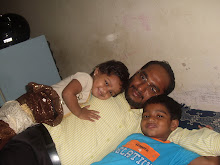After a nice and deep sleep I woke up at 4.30am to see Abdullah Haji performing the voluntary night prayer, tahajjud (the Arabic word means the struggle to get rid oneself of sleep). As we bumped in to a man in Indian blue-lined Dhoti while getting out of the lift on our way to the nearby Masjid Hajjah Fatima for Subah (early morning) prayer, Haji told me he is a Chulian. I eagerly asked what Chulia is as he repeatedly used the term. He said it is the name used in Southeast Asia for Hanafi Muslims with Indian origin.
Singapore is home to a notable number of Chulia Muslims, who came mostly as traders and money changers. The name is after the famous Chola Kingdom of Tamil Nadu along the Coromandel Coast. There is a historically important monument called Jamae Chulia Mosque, ironically established in the heart of the amusement hub of Chinatown. Built in 1826, this is the first of three Islamic heritage buildings in Chinatown. The other two are Al-Abrar Mosque and another building in the memory of Seikh Shahul Hamid, the famous Sufi scholar buried in the famous South Indian pilgrim city of Nagore. The mosque is a national monument since 1974, thanks to its typically south Indian entry gate and remarkable architectural style which is a mix of sorts.
The morning prayer at Masjid Hajjah Fatimah was the first experience on the life and culture of the ethnically mixed Muslim community of Singapore. There I met people from various backgrounds and multiple origins, Tamil, Malay, Malayali and even Chinese and Arab origin. The Imam was from Java, a clean-shaved man wearing the typical half-sleeved cream Malay shirt and colored line dhoti. His recitation of Quran was attractive, but he was doing the extra movement back and forth while reciting, a widespread habit generally picked up while memorizing the holy book, but frowned upon during the prayer which is considered nullified by deliberate extra moves according all schools of law. Almost all of the Muslims in Southeast belong to Shafi legal thought, and it is evident especially through prayer rites and rituals observed at the mosque. After the namaz, they sit longer and collectively murmur various invocations and litanies before an emotional group prayer in Arabic led by Imam, like as majority of us do in Kerala, a typical Yemeni-Hadrami tradition spread throughout South India and Southeast Asia, the major point of departure in my research project. The imam asked me to come another day when I introduced myself as a researcher on the way to his native place.
Masjid Hajjah Fatimah is a heritage mosque built by a woman on the Beach Road in the Malay enclave of Kampong Glam district. Built in 1845, the mosque was designed by British architect, John Turnbull Thomson, a fact that explains its European elements along with Islamic ones. It was named after an astute businesswoman from Malacca who married a Bugis prince from Celebes (Sulawesi), and who donated the land, on which her house formerly stood, for the mosque. Undaunted by an early widowhood, Fatima single-handedly managed a huge business through numerous vessels and prows that helped her amass a large fortune. Her only daughter Raja Siti was married by Syed Ahmad Alsagoff, son of an influential Arab trader, Syed Abdul Rahman Alsagoff. The compound of the Mosque includes the graves of Hajjah Fatimah, her daughter and son-in-law. Since 1973, Hajjah Fatimah Mosque is one of the national monuments. Today the mosque is under the Majlis Ugama Islam Singapura (MUIS).
The morning scenes on the way back were interesting as usual. Life was already on showing its multi colors. Various types of people were out on the pathways lined here and there amidst the housing and business complexes, cleaning workers toiling along footpaths, office and school goers, night-duty returners, brisk walkers, dog walkers, couples enjoying the breeze and shadowy climate immersed in their own world, and wrinkled elders - singles , couples and groups - out for pastime.
We walked to a nearby hawker centre passing a Chinese restaurant and a fruit-vegetable market. The smell from the Chinese food court was penchant and unbearable for me. It has always been like that only, when many of my friends go ga-ga over Chinese cuisines, I have yet to cope even with its smell. They were eating all kind of things, including meat and fish, right from the early morning. Abdullah Haji took me to his regular vendor, a devout Bangladeshi, and we had a delightful tasty tea in a big cup along with a bun. The pulled tea 'teh tarik', sold at 80cets, is made with sweetened condensed milk. While having the tea as well as getting new and new information from Haji, I looked around the hawker centre, one of the popular food courts meant generally for ordinary people. The concept of the hawker centre is open-air complexes housing many stalls selling a variety of inexpensive food. Found near public housing estates or transport hubs, hawker centers are another display of the multi-ethnicity of Singapore. Stalls representing all from global and cultural colors and run by people from various backgrounds are available under one roof. Some stalls are exclusive for some items. Jointly owned by the National Environment Agency (NEA), Housing and Development Board (HDB) and JTC Corporation, and managed by NEA, the public hawker centre system is the best way to maintain hygiene in cheap-eat centers, a best idea countries like India can learn a lesson from. In almost all Indian cities cheap public eating is always risky and dangerous, but hugely popular. We are always used to neglect the filthy and dirty situations at our roadside Dhabas, not to mention the problem of unhygienic food preparation by unlicensed street hawkers.
Subscribe to:
Post Comments (Atom)

No comments:
Post a Comment